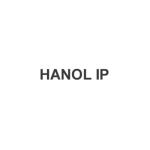Precision medicine, also known as personalised medicine, is an emerging field in healthcare and seems to have a promising future as it accounts for 42% of new molecular entities which the Food and Drug Administration (FDA) approved in 2018. Since precision medicine aims to provide bespoke medical treatments based on individual patient's characteristics, it essentially incorporates diagnosis and treatment methods. Under Korean patent law and practice, treatment and diagnosis methods are not considered patent eligible subject matter. As such, it is necessary to circumvent restrictive eligibility requirements to obtain protection for precision medicines in Korea. In the past, although precision medicines can be pursued as a pharmaceutical/diagnostic composition claim, it was not easy to claim methodological aspects of precision medicines (e.g. dosage regimen) which were not considered as technical features constituting composition itself (Supreme Court decisions 2007Hu2926 and 2007Hu2933, rendered on May 28 2009).
However, in 2015, the Supreme Court overturned the previous decisions and ruled that dose and dosage regimen are recognised patentable technical features of medical use inventions (Supreme Court en banc decision 2014Hu768, decided on May 21 2015). Thereafter, several cases have established law on this issue. Recently, the Korean Intellectual Property Office (KIPO) has issued a revised version of the patent examination guidelines (effective from March 18 2019), providing a framework for expanded protection of precision medicine in Korea, which is quite encouraging.
Patient sub-groups are also patentable technical features
KIPO's revised examination guidelines clarify that patient sub-groups are acknowledged as patentable technical features of medical use inventions in the same manner as the dose and dosage regimen. Further, the standard for determining novelty and inventiveness of such precision medicine inventions was supplemented with regard to the patient sub-groups.
According to the examination guidelines, medical use of a known compound can be recognised as novel, if such use is directed to 1) a therapeutic application in a specific disease which is not disclosed in the prior art (i.e. new indication), 2) a dose/dosage regimen or administration route which is different from other previously known dose/dosage regimens or routes, and 3) a patient sub-group which is distinguished from other previously known patient groups. Further, the inventiveness can be recognised if there is "an unexpected remarkable effect" resulting from applying the known compound to such new indication, dose/dosage regimen, or patient sub-group, so that such medical use invention is considered to be worth patent protection.
In view of the examination guidelines and case law to date, the likelihood of obtaining a patent for a precision medicine invention hinges on how successfully the applicant can prove unexpected remarkable effects resulting from the selection of the claimed dose or dosage regimen or patient sub-groups. It is crucial to submit comparative experimental data showing remarkable effects such as superior efficacy, reduced side effects which cannot be predicted from other previously known dose or dosage regimens, or other patient sub-groups.
KIPO acknowledges patent eligibility in digital diagnosis
In the revised examination guidelines, the scope of patent eligibility with respect to diagnostic methods was expanded upon. Specifically, even diagnostic methods can be recognised as patent eligible, as long as these methods are clearly interpreted as a method for processing information on a computer (e.g. a method for processing biological big data), and clinical judgment by medical practitioners is not involved.
It is possible to draft precision medicine claims in various ways
When drafting a precision medicine claim, technical features with regard to specific patient sub-groups and/or dose/dosage regimen are accepted as claim limitations having patentable weight.
Normally, dose/dosage regimen claims are defined by dose, dosing interval, dosing frequency, dosing sequence, and administration route. Patient sub-groups usually feature age, gender, weight, physiological or pathological parameters, and biomarkers (e.g. the presence of specific gene mutations or expression of specific proteins) to be distinguished from known patient groups. In addition to the patient's characteristics above, a precision medicine claim can be drafted to further involve preceding steps for diagnosis/identification/selection of specific patient groups, or preceding steps for determination/identification/selection of specific dose or dosage regimen, although it is not a requirement to recite these steps.
In order to support effective and successful patent prosecution and enforcement, it is advisable to draft various types of claims, if possible, in a patent application.
Suitable claim formats in Korea are listed below.
1: Patient sub-groups (with biomarker and diagnostic steps)
A pharmaceutical composition comprising compound X for use in a method for treating malignant tumour in a human patient having a biomarker A, the method comprising assaying a blood sample from the patient, determining if the patient has biomarker A, and administering a therapeutically effective amount of compound X to the patient having biomarker A.
2: Patient sub-groups (with biomarker and without diagnostic steps)
A pharmaceutical composition comprising compound X for use in a method for treating malignant tumour in a human patient having a biomarker A.
3: Patient sub-groups and dosage regimen
A pharmaceutical composition comprising compound X for use in a method for treating malignant tumour in a human patient having a biomarker A, the method comprising administering a first dose of compound A for a first period of time and consecutively administering a second dose of compound A for a second period of time.
4: Diagnostic compositions
A composition [a kit] for diagnosing disease X, which comprises an agent for detecting the presence of biomarker A or determining the expression or activity level of biomarker A.
5: Diagnostic methods (diagnostic information)
A method for providing diagnostic information about disease X, the method comprising detecting the presence of biomarker A in an isolated sample obtained from a patient or determining the level of expression of biomarker A in an isolated sample obtained from a patient.
6: Diagnostic methods (digital diagnosis)
A method for assessing susceptibility to gastric cancer in a subject, comprising (a) entering data of one or more allelic mutations in gastric cancer into a computer wherein the allelic mutations are present in the subject; (b) comparing the said data with database stored in a computer comprising information on allelic mutations in gastric cancer and the mutation-associated gastric cancer; and (c) producing indicators to determine whether the subject is susceptible to gastric cancer based on the said comparing.
Min Son
Partner, Hanol IP & Law
HANOL Intellectual Property & Law
6th Floor, Daemyung Tower, 135, Beobwon-ro, Songpa-gu
Seoul, 05836
Republic of Korea
Tel: +82 2 942 1100
Fax: +82 2 942 2600












